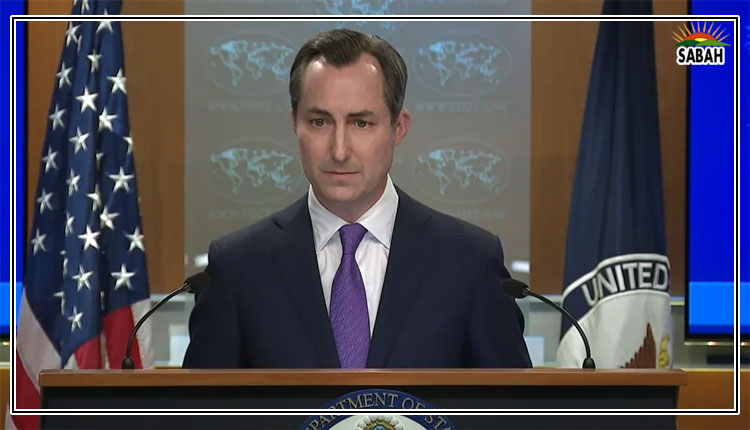Building absorptive capacity…Ali Tauqeer Sheikh
PAKISTAN has been less than successful in accessing international climate finance, and even less in implementing the approved projects in a timely or effective manner. Most projects at the national and provincial levels face inordinate delays, underspends, cost overruns, extensions, repurposing, or even cancellations. Absorptive capacity is not just the ability to spend, but also to use the new knowledge generated by the projects to enhance our capability to systematically respond to climate and sustainable development challenges.
We have habitually moved from one project to another, and one policy document to another without always reflecting on the value of our experience, new learning, assimilating and applying it to build our human and institutional competencies. In reality, each project can serve as a building block for subsequent interventions based on new knowledge, research, and practice. This is how our absorptive capacity is enhanced and evidence-based policies are simultaneously strengthened.
It can be argued that instead of seeking new projects and finances in an ad hoc manner, it will be far more useful to systematically build upon earlier project interventions, commitments, and the recommendations of technical studies. Completing the incomplete loops will strengthen our absorptive capacity and climate resilience, and also bring greater accountability and transparency.
Here are three incomplete loops that, if completed, can provide opportunities to build up the absorptive capacity for managing climate risks.
Completing the incomplete loops will strengthen our climate resilience.
Transition of clean development mechanisms to the Paris Agreement: If Pakistan registers eligible CDM projects under the Article 6.4 mechanism, the Certified Emission Reductions can be used to fulfil its obligations under the Nationally Determined Contributions. It is a narrowing window in the Paris Agreement that will close on Dec 31. In addition to the CERs needed for NDC implementation, this transition is necessary to revive international investors confidence in Pakistan.
It is worth mentioning that the Paris Agreement has introduced a Sustainable Mitigation Mechanism with the dual aim of contributing to greenhouse gas mitigation and promoting sustainable development. The SMM has a stronger political mandate than CDMs to ensure that development impacts are real, measurable and long-term. Pakistan is already receiving carbon credit income through 18 approved CDMs. It has 76 approved projects of which 36 are registered under the Kyoto Protocol, expected to offset 3.79 metric tons of carbon dioxide equivalent per year. Since most CDM projects in Pakistan are in the energy sector, there is headroom to recast them for other financing options.
Preparing for Nationally Appropriate Mitigation Actions: Pakistan has only secured three projects since the NAMA facility became operational a decade ago. They focus on a transition to energy-efficient lighting and decarbonising textile manufacturing. These projects have set a track to adopt an ambitious but systematic approach, particularly since the facility is mostly funded by Pakistans major trading partners including the UK and Germany. We have a shared interest with them in increasing trade and reducing emissions in energy, particularly in the manufacturing, construction and transportation sectors the highest sources of Pakistans carbon emissions, according to our national carbon inventory. Conceived and developed in partnership with the private sector, additional NAMA projects can help us reduce production costs to become competitive.
Gearing up for emissions trading: A carbon gold rush has attracted carbon cowboys who are scouting the country to lock private landholders, provincial governments, and private-sector entities into long-term concessions. Voluntary carbon markets (VCM), unless managed and regulated judiciously, offer attractive possibilities for fortune hunters. Perhaps the most credible exercise in Pakistan was under a Reducing Emissions from Deforestation and forest Degradation (REDD+) project that began almost a decade ago with a readiness grant by the World Bank.
A baseline for forest emission levels was completed but the development of MRV (measurement, reporting and verification) mechanisms has fallen behind. Its realisation could help unlock performance-based payments from reduced emissions. Some estimates have suggested that Pakistan could annually earn $94.74 million to $315.8m. The extent of financial benefit will, however, hinge on the availability of funding from REDD+ financing mechanisms including the Green Climate Fund.
This, regrettably, is not the only story where ambition diminished after securing the readiness grant. Another instance of thin absorptive capacity was the UNFCCC support for the Collaborative Instruments for Ambitious Climate Action to identify policy options for the development of concrete proposals for the design, development and rollout of instruments. The study recommended that, instead of carbon taxes, Pakistan work to create a domestic emissions trading system (ETS) for introducing carbon pricing. The recommendations are languishing while such markets are springing up fast in the developing world.
The result? We have created a free-for-all policy environment, instead of completing the incomplete loops on which carbon trading would hinge. In the absence of national policies, the provinces have begun to chart their own ways.
Sindh has signed a secretive long-term concession on the Indus delta mangroves. At least four wind power plant projects are advancing in Jhimpir, Thatta and Jamshoro, totalling about 300MW and collectively promising emission reduction by 454,137 tonnes CO2e/year, ironically without a national registry where the emissions reduced could be recorded. KP has, likewise, started developing its own VCM projects pipeline and a provincial VCM framework. All this, while the country awaits a formal policy on carbon trading, carbon taxes, setting up a domestic ETS, or a national registry and a robust MRV system.
Pakistan definitely needs a national framework for voluntary carbon markets and a roadmap for its regulatory market aligned with the Paris Agreement, both duly approved by the cabinet.
In the context of climate change, we will need to build up our absorptive capacity by completing the incomplete loops of action. Absorptive capacity is a dynamic concept as it relates to the rate at which we can learn and use scientific, technological, or other knowledge, generated by projects and partnerships. It can best be harnessed by strengthening our ability to assimilate new knowledge. Each project offers an opportunity to enhance absorptive capacity. It will help absorb and assimilate new ideas and innovations needed for climate resilience and adaptation. This is possible if we can treat each project as seed money for transformational change.
Courtesy Dawn











